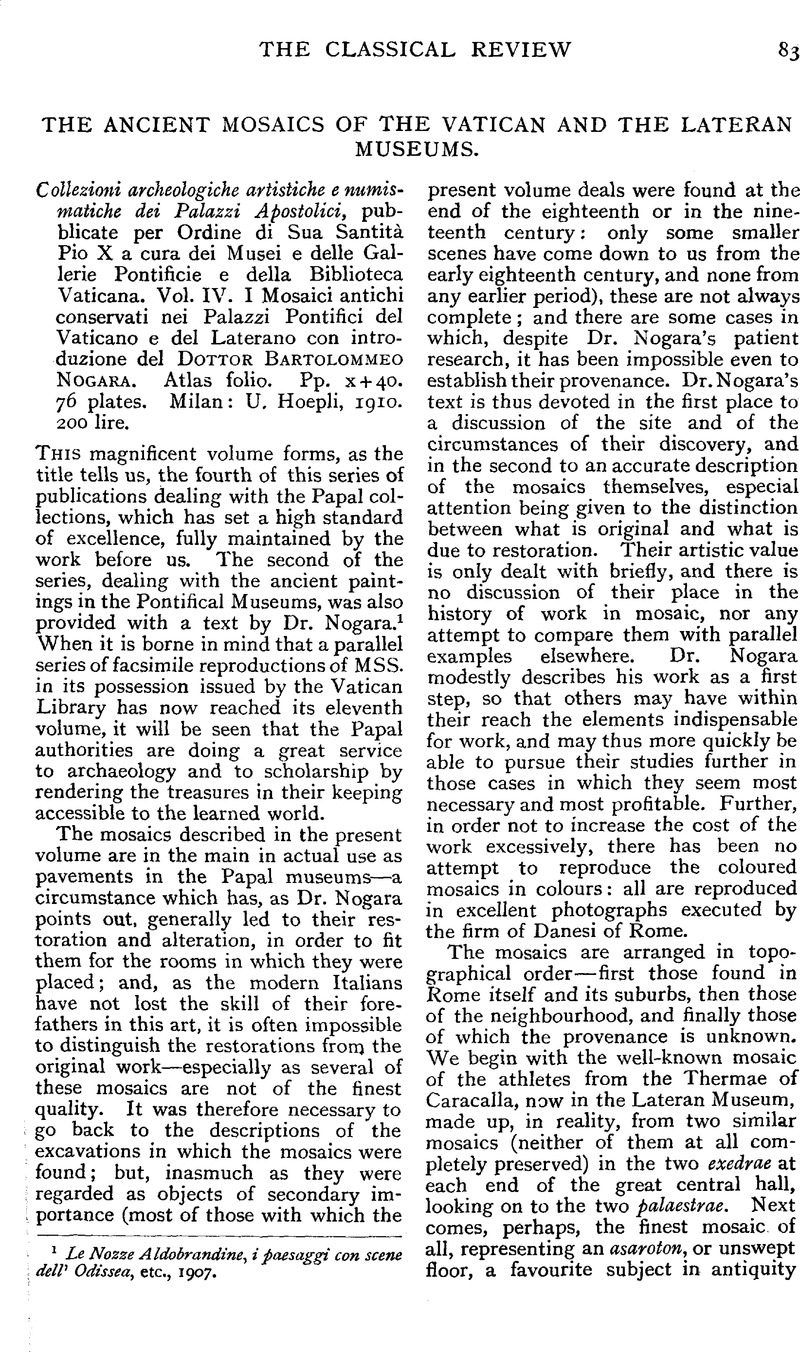No CrossRef data available.
Published online by Cambridge University Press: 27 October 2009

page 83 note 1 Le Nozze Aldobrandine, i paesaggi con scene dell' Odissea, etc., 1907.
page 84 note 1 I may add that at South Kensington (Art Library, vol. 93, B. 44) there is a volume of coloured drawings of marble pavements by Gaetano Piccini, also intended for publication. It bears the title: Pavimenta antiqua et moderna in Italia existentia. Tabulis CII coloribus delineata a Gaetano Piccinio Impensis autem V(iri) C(larissimi) Adriani Paetsii. Roma MDCCXVI. Some of the drawings represent marble pavements in churches. The antique pavements are as follows: Villa Cesarini (24 drawings), Vigna Moroni (18), Nettuno (16), Monte Circello (10). The Villa Cesarini must refer to the Vigna Cesarini at the Marmorata, where excavations were made in Ficoroni's time; though in the accounts known to me there is no reference to marble pavements, but only to loose blocks and pieces of marble. See his Memorie, 2. 3, 24 in Fea, Miscellanea, i. 126; and cf. Roma Antica (1741), p. 290. Venuti's, Roma Antica, ed. Piale, (1824), ii. 48Google Scholar, refers to a tesselated pavement found in a neighbouring vineyard. The Vigna Moroni is on the Via Appia, on the right just before the Sebastiano, Porta S.. Ficoroni, in his Bolla d'Oro (p. 35)Google Scholar, tells us that he found there no less than ninety-two sepulchral chambers, paved with various marbles. I know of no excavations carried on by Ficoroni either at Nettuno or at Monte Circello or Circeo, though some discoveries were made at the latter in 1725 (Mélanges Éc. Franç., 1905, 170).
page 84 note 2 By the kindness of the Earl of Leicester and of the Provost and Fellows of Eton College, I was able to compare these two important series of drawings at the British Museum; I hope shortly to give some account of the results of my investigations.